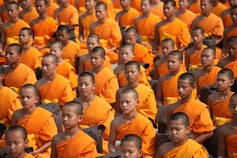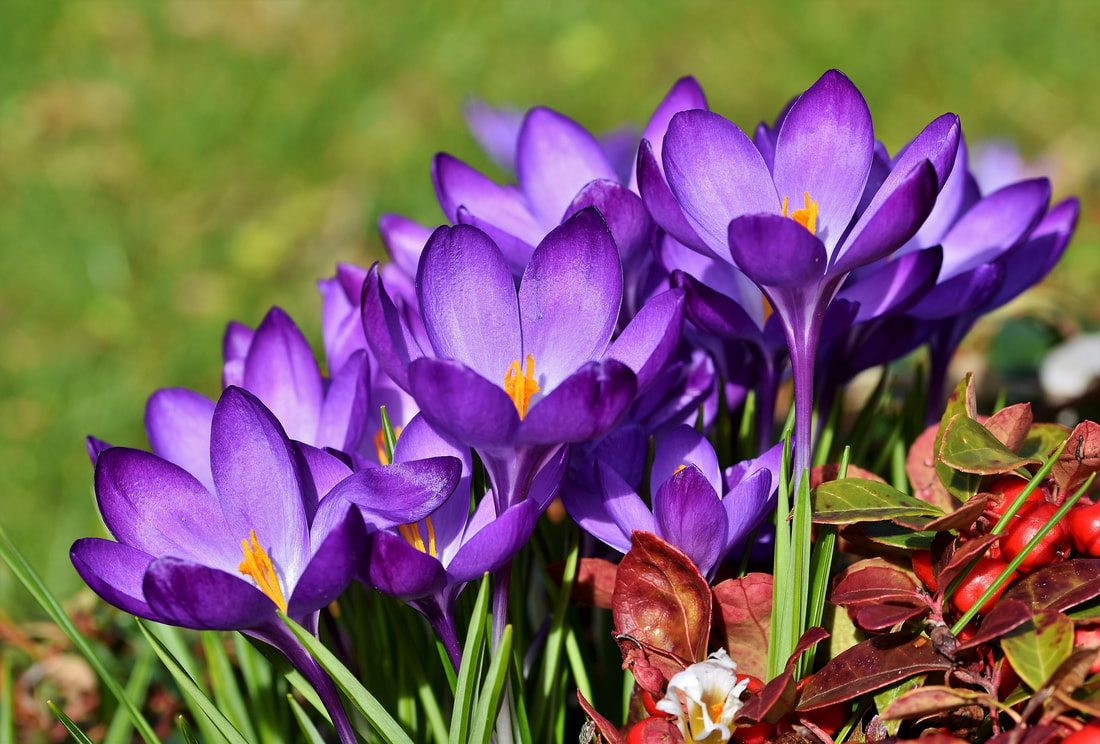
Croci belong to the Iridaceae family and are native to central as well as southern Europe, North Africa, Middle East and Central Asia. In Europe, there is also Colchicum autumnale (Herbstzeitlose in German) that blossoms in late summer and autumn. Both Crocus vernus and Colchicum autumnale are toxic so beware not to ingest any.
Our Crocus vernus are relatives to Crocus sativus, commonly known as the Saffron plant. They are eatable. You might know Saffron as a spice that you put into your risotto, that gives the risotto a beautiful fragrance and yellowish color. It is the most expensive spice in the world, if you get pure, good quality Saffron, it costs about CHF 1800 per kilogram! Hence, only very small portions of a gram are sold at stores and our dishes require only very minute amounts. The stigmas of the Crocus sativus is what Saffron is, those little stringy parts of the flower in the center. So maybe now you can imagine why it costs so much. Someone has to harvest these very delicate thread-like parts of the blossom in autumn and prepare them. Iran produces 90 percent of the world's Saffron. I just found out that a village in canton Valais, Switzerland actually produces its own Saffron (probably in very small amounts and quite exorbitantly priced!).
In the old days, Saffron was also used in the dying of clothes. Thus, the name Saffron Orange. The Buddhist monks used to wear robes of this color, many believe that this was the original color that the Buddha himself wore. Hence, the Theravada Buddhist order (Buddhists orders in South-East Asia and Sri Lanka) still does. In fact, you may also see other orders such as the Chan (Zen) Buddhist Shao Lin monks from China, who also practice martial arts along with meditation, wear this Saffron color and grey too. Saffron Orange is a symbol of the flame of fire, as the reminder to seek truth and enlightenment.
In Chinese Medicine, we call Saffron, Fan Hong Hua. It is a blood-moving herb, used in combination with other herbs (as with most of the Chinese medical formulae) to aid menstrual and skin issues. It affects the organs of the Heart and Liver, that means that it would also have effects of calming the spirit, aiding in insomnia and anxiety. As with many of the herbs in the Chinese Materia Medica, Saffron is a food-grade herb with a sweet flavor and a neutral to cold temperature. It should not be used in large amounts (who would with its steep price) and in cases of being pregnant.
When I look at the Crocus, I sense the delicate exterior and the power center in the stigmas. It holds the power of the Yin, storing the power of inward movement of autumn, sinking its force deep into the corms as cold winter hits. Just as the light changes and the temperature in the earth rises, it pushes its leaves through the earth and then these radiantly colored petals do, what seems to me, like Yoga back-bends to reveal its orange core. It reminds me that Yin is just as powerful as Yang, that we can't have one without the other. In order to Spring, we must have stored enough power in the Winter.
Crocus image by Capri23auto on Pixabay
Monks image by Honey Kochphon Onshawee on Pixabay


 RSS Feed
RSS Feed